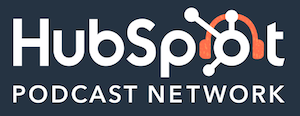How To Win Friends And Manage Remotely written by John Jantsch read more at Duct Tape Marketing
Marketing Podcast with McKenna Sweazey
 In this episode of the Duct Tape Marketing Podcast, I interview McKenna Sweazey. Mckenna’s global marketing career has spanned the spectrum of start-ups to corporations. McKenna’s own management experience, leading teams around the world, has provided the foundation for her speaking and coaching, around a structured approach to this new world of remote-first work. She’s also the author of a new book — How to Win Friends and Manage Remotely.
In this episode of the Duct Tape Marketing Podcast, I interview McKenna Sweazey. Mckenna’s global marketing career has spanned the spectrum of start-ups to corporations. McKenna’s own management experience, leading teams around the world, has provided the foundation for her speaking and coaching, around a structured approach to this new world of remote-first work. She’s also the author of a new book — How to Win Friends and Manage Remotely.
![]()
![]()
Key Takeaway:
How do you manage a poor performer over Zoom? How do you casually deliver positive feedback via Slack? What’s the most professional use of a gif? Two things are certain with the shift in office structure: First, we will never go back to “the way things were.” Second, we all must learn to live in a virtual workplace. If we are managers, that means we also need to know how to communicate with, motivate, and coach virtual teams. In face-to-face interactions, humans have thousands of indicators to tell them what the other party is thinking and how they are reacting.
Resorting to purely digital communication obliterates these clues, stopping us from reading the subtle body language we’ve evolved to use in all interactions to become better leaders, kinder managers, and more effective cogs in the corporate machine. In this episode with McKenna Sweazey, she shares why expressing empathy is the most important factor in managing and working with others in the virtual-office world.
Questions I ask McKenna Sweazey:
- [2:17] What’s the hardest challenge for people who were used to having their team together in person to keep that relationship and engagement going
- [3:22] From like a leader’s ability to have an impact, what do you think we have lost?
- [4:20] Do we need a new set of visual cues that we need to adapt to?
- [6:31] Are there some things that you see people doing that we would never do in person on Zoom?
- [9:14] How do we make sure that we are not being misunderstood virtually?
- [11:33] The core concept in your book is empathy and listening — could you dive into more of that?
- [14:40] Has the concept of giving feedback really suffered or is there a way to make that a useful exercise when we’re not in person?
- [16:28] Would you say that empathy and listening is trust building?
- [17:42] Where can people connect with you and grab a copy of your book?
More About McKenna Sweazey:
- Her book – How to Win Friends and Manage Remotely
- Connect with her on LinkedIn
Take The Marketing Assessment:
-
- Take the Assessment
Like this show? Click on over and give us a review on iTunes, please!
John Jantsch (00:00): This episode or the duct tape marketing podcast is brought to you by the nudge podcast, hosted by Phil Agnew and brought to you by the HubSpot podcast network. You can learn the science behind great marketing with bite size 20 minute episodes packed with practical advice from admired marketers and behavioral scientist. Nudge is a fast pace, but still insightful with real world examples that you can apply. Her recent issue. Talked about the, the idea of getting your customers, your prospects in the habit of buying from you or listening to you or following you habit based marketing, download, nudge, wherever you get your podcasts.
John Jantsch (00:48): And welcome to another episode of the duct tape marketing podcast. This is John Jantsch and my guest today is McKenna Sweazey. Her global marketing career has spanned the spectrum of startups to corporates her own management experience. Leading teams around the world has provided the foundation for her speaking and coaching around a structured approach to this new world of remote first work that we all live in today. She’s also the author of a new book. We’re gonna talk about how to win friends and manage remotely. So McKenna, welcome to the show.
Mckenna Sweazey (01:20): Thanks. I’m delighted to be
John Jantsch (01:21): Here. So I was so happy to see that right off the bat. You let hard news right out of the bag, that leadership is actually self development.
Mckenna Sweazey (01:31):
John Jantsch (02:16): Yeah. So, so what’s the biggest thing that you found people struggling with, particularly people that just maybe their entire career has been bring the team in together. We all meet, we have our one on ones, you know, I mean the kind of normal stuff what’s been the biggest, or maybe the hardest challenge for them to keep that relationship, that engagement, you know, going,
Mckenna Sweazey (02:37): Yeah, I think the, well, the biggest problem is that throughout the earlier parts of the pandemic, I think you have some fatigue, right? With like, I don’t know, happy hour over zoom, that is actually a terrible experience, but it was what was, it was what we had and now we’re left with like, well, that’s not a good solution, but then what, and I think you’re seeing some companies and some industries build up like really good ways to connect virtual and hybrid teams. But I don’t know, that’s super commonplace yet, obviously in a idealized world, even if you had a hundred percent remote team you’re gonna get together in person, there is no substitute for that, for the kind of work that requires, you know, a lot of interpersonal effort and teamwork.
John Jantsch (03:21): Yeah. So what do you think is what have we lost? And again, I don’t mean like the bonding and stuff like that, but I just mean from like a leader’s ability to have impact what have we lost?
Mckenna Sweazey (03:32): Well, I think on a very technical level, so they said they academics say that 97% of what, what we are communicating when we’re speaking to someone is not the words coming out of our mouth, obviously on zoom, I can see your facial expression, but we all know that’s not moving as quickly as the human eye can adapt. The audio quality is different. It’s coming directly. It’s not a 360 degree audio. So that’s different, particularly when you’re in a group setting, you’re not catching things the way you would. So you just actually have less information to use to get along with people you’re used to having, let’s say 10 times as much information. So that’s, I think what we’ve lost and that makes it
John Jantsch (04:08): Difficult. And I bet you, we really underestimate like the person playing around with their pen, sending the signal that, uh, get to the point, would you, right. We miss all that, right.
Mckenna Sweazey (04:16): Yeah, exactly.
John Jantsch (04:18): So do we need to adapt to that? In other words, do we need a new set of visual
Mckenna Sweazey (04:30): I do think that, you know, being very cognizant and practicing and paying more attention and it, you know, I become second nature with time, but in the beginning saying, you know, am I getting, am I getting any tells from you the equivalent of the pen clicking? And particularly for ones that might be like, not annoyance, but like, oh, you seem a little blue today. Do I follow up later and check in, you know, in a, in a, in a way that feels respectful and what the appropriate space and see if I was right and start building up, you know, I think people camera on versus camera off. It means different things to different people. So you’re building up information that tells you, okay, she has her camera off today. What does that mean? Usually for, we have a hundred years of normal office behavior expectations. We do not have a hundred years of normal zoom office expectations.
John Jantsch (05:21): You know, I find myself the one I fall into that I have to like intentionally remind myself is, you know, you’d come to a meeting together, everybody’s getting their chair and you say, oh, what’d you do this weekend? You know? And, and zoom call is like, let’s get down to business, you know? And I really find myself having to stop and, and, you know, not just like how are, you know, kind of thing, but really try to, I think it’s, I think it gets at what you were talking about. You seem a little glued. I mean, we picked that up from just the casual conversation, don’t we?
Mckenna Sweazey (05:49): Exactly. And it’s building context and learning out how to build that context. Zoom only that’s, you know, how they look, that’s how they sound. Uh, and it’s not, it’s much more subtle than in person, right? Because I only have your face and maybe some hand gestures, I don’t have your toe tapping. Right. Your arms crossed. I don’t, you know, I always say, you know, in the office, if you heard someone fighting with their mother-in-law on the phone, or they’ve spilled a cup of coffee down their shirt, you have pretty much all the context, you need to react to their emotions. Right. But when you show up in that zoom call, if I don’t ask how you are, and if you aren’t comfortable being, you know, relatively honest with me, I don’t have any context for why you might be moody or a bully or anything. Yeah.
John Jantsch (06:30): So are there some things that you see people doing that we would never do in person on zoom? Like I, I mean, I see people all the time, they’re clearly doing three things.
Mckenna Sweazey (06:42):
John Jantsch (07:43): You know, that’s a really great point because I think that maybe over time, some of those written or unwritten things have taken hold in organizations, but now everybody’s just winging it or feels like they’re wing it. And nobody has sat down and said, here’s how we do a zoom meeting. That’s a really great point.
Mckenna Sweazey (07:59): Yeah. It’s I think the etiquette probably has to be spelled out for the platforms. And, you know, I’ve worked in companies where we’ve used project management software, like Asana or JRO or whatever. And it’s another place where you can really, people can, some people are passive aggressive, maybe intentionally, maybe not. Some people tag too many people, they don’t tag enough. They put too much information too little and you need an etiquette. You need, this is what good looks like. This is how we, you know, this is who you tag, who you don’t tag. And this is true when you’re working on the same document, you know, commenting on a Google doc with someone, so many opportunities where we don’t have enough time for people to have learned passively how you ought to behave. So we have to be a little bit more like, uh, gosh, I can’t remember the opposite of passive. We have to be a little bit more prescriptive about how you should behave in these environments.
John Jantsch (08:49): Well, and I guess some organizations don’t do this, but a lot of our organizations have certainly prescriptive about how a meeting runs. So it’s kind of the same thing I’ve, we’ve been picking on or talking about
Mckenna Sweazey (09:27): You know, honestly, I don’t know why you would say short of the smiley emoji. I think emojis are actually really useful. Yes. I know that there’s this idea that gen Z uses them differently than millennials and everyone uses them differently, but everyone also kind of understands the basic ones. Wink means that and mean that seriously, a smile means that, I mean, that kindly, I think,
John Jantsch (09:47): And this heaven knows what, at that point, a lot of things, it
Mckenna Sweazey (09:50): Means a lot of things, but I mean, it’s pretty easy generally speaking to parse out, like, will you do this thumbs up? Yes, I will. Thumbs down is more confusing. I won’t, I don’t want to, I don’t know. Well,
John Jantsch (10:00): What about the rock? What about the rocket ship though?
Mckenna Sweazey (10:02): The rocket ship. Okay. Well, again, back to, you know, it might in some organizations be helpful to use like a dictionary so we can say, yeah, like let’s spell it out. This is what we mean by Sarcas like put it in parenthesis and say sarcasm, if you need to, because you don’t have that context. I think that really is. I think the solution to find ways to spell out that you’re being humorous. Right. And again, it’s back to what I said before in an ideal world. Like you shouldn’t be relying only on email, if you’re trying to create real bonds and move things forward, because it can be really hard to understand jokes. And particularly if you’re working across cultures or, oh, right. I mean, there’s so many ways that you can just like, you know, stick your foot in it. And if you know someone, you know, that was never their intention, but if you don’t know them, you don’t have to go on.
John Jantsch (10:52): Yeah. We could do a whole show on diversity and communication. Couldn’t yeah, no question.
John Jantsch (10:56): And now let’s hear from a sponsor, you know, today everybody’s online, but are they finding your website, grab the online spotlight and your customer’s attention with Semrush from content and SEO to ads and social media. Semrush is your one stop shop for online marketing build, manage, and measure campaigns across all channels, faster and easier. Are you ready to take your business to the next level, get seen, get Semrush, visit Semush that’s S E M rush.com/go to try it free for seven days.
John Jantsch (11:31): So we’ve been talking about, eh, tactics really let’s get to the heart of your book, which is really the core skill I think. And that’s listening and empathy because that’s really what all of this comes down to is. Yeah.
Mckenna Sweazey (11:43): And I think so I, digital empathy is this term that I, don’t not the first one to use it, but I’ve really hung my hat on it. And it’s really the idea of, and it’s, it’s what we’ve talked about, figuring out how to take the innate human skills, because this is like really wired into our lizard brain. Like, can I read your facial expressions? Do I understand what emotion you’re?
John Jantsch (12:01): Are you gonna hurt me or
Mckenna Sweazey (12:03): Yeah, exactly. Are you gonna kill me or are we gonna break bread and to figure out how to put that in place in a digital first world? And so something like the emoji is actually like really a part of that. What are we gonna use to be able to communicate in a way that conveys our emotions more effectively? So I think all the, we got thrown into the situation for so many of us, I had been working, not remotely, but working on global teams. So managing and being managed primarily remotely, even if I was in an office and had thought a lot about how do you connect with people? What do you use to build those bridges? And what are the important things? You know, I think about like team building, I put this on LinkedIn. People want bananas, but competitive team building is really useful.
People like, oh, I don’t like competitive, but like, you don’t have to like be, you know, it doesn’t have to be a fight to the death softball game. That can be really uncomfortable for people who are bad at softball. And it can be uncomfortable for people who lose, but something where it’s sort of an even playing field, let’s say mini golf, it’s pretty even playing field, you know, giving teams a way to connect and figure out what the other is, um, is a great way to build empathy. You want to sort of create that parochial team empathy, obviously giving them the context, whether that’s explaining what emojis do or being in person. So you have more context about each other. And we talked about this in the beginning, but like as a manager, you have to like really have yourself in order. Am I am on my best game? Because our computing power as a human, particularly our ability to understand emotions goes totally down. If you are in yourself in a bad mood. Yeah. If you’re retired, right. If you aren’t scheduling your day in a way that puts you on your best self, you can’t really be that kind of manager. And you certainly can’t listen and like reflect back what other people need to hear.
John Jantsch (13:44): Yeah. I think just to end that point on the competitive things, I think those little game type of things actually allow people to, to lower the masks. Mm-hmm
Mckenna Sweazey (14:10): I think it, yes, but everyone’s is different. Right. And what do you need? And I think it can be helpful to keep a diary for a week or two and say, how are my energy levels? Do I feel lonely? Do I feel connected? And particularly for people who have control over say team building and offsite to sort of keep checking the pulse, where, how are we doing on this? How are we doing on that feeling? Okay. These let’s say that you’re using some sort of software in their scores. We’re starting to drop here on a feeling connectedness. We need to have an offsite because yes, absolutely. I think there’s a rhythm, but everybody’s rhythm is different. Yeah, yeah.
John Jantsch (14:39): Yeah. All right. Let’s talk about the last one I wanted to touch on and this feedback. Mm. Um, so, you know, I can’t see the pictures on your desk. I can’t, I don’t really know what’s going on in your world. And yet I am going to tell you what you are doing right. Or doing wrong. And, you know, is that, has that really suffered or is there a way to make that a useful exercise when we’re not in person?
Mckenna Sweazey (15:02): I think the biggest problem is that if you’re not face to face, you can avoid things really easily. Right? Right. And the longer you avoid giving a piece of feedback, the bigger it becomes. You know, if I tell you five minutes after a presentation, Hey, I thought you went a little too fast, or you skipped over this one key element or you lost the room, whatever it is. And I tell you right afterwards, that is a very different piece of feedback than if I schedule a meeting with you two weeks later. And I’m like, I wanna talk about how that presentation went. You’re gonna perceive those very differently. And unfortunately, I can’t catch you after the meeting now to deliver it like that. I almost always have to schedule it in some sense. And that puts more weight, maybe on some, a lot of feedback that just needs to be given it’s an opportunity to improve.
So I think the best way to deal with that is to really get into a habit, a rhythm of giving feedback. And so if you have a one on one with someone you, every time you give some feedback or you say we’re gonna have an opportunity for feedback so that each so that you never forget, and that each one doesn’t have to hold that much weight. Yeah. And doesn’t have to be this big moment where you schedule it. Cause I think, you know, some people are sitting at home stewing, why did they schedule that medium? I hire, oh my God. Right. And some people are not good for them.
John Jantsch (16:15):
Mckenna Sweazey (16:34): It? Absolutely. And I think there are ways to get, to build trust virtually, you know, you have some team building opportunities that are very like very emotional and very opening. You know, if you have life mapping where you’re sort of walking through with the team and saying all the highs, three highs and three lows of your life, you can only do that. Like in a kind of small group, you can’t do that across an entire organization. Right. And so I do think creating opportunities for people to get to know each other in person and creating formulas so that you can practice giving feedback. And again, if everyone gives more feedback, everyone gets better at doing it. And we need more feedback because you’re not getting any, you’re not getting any feedback of you tapping your pen during my presentation. I don’t know that I’m boring. People it’s completely silent on the other end. I can’t see their faces. I can’t hear them laughing. So I absolutely need that feedback. So I think getting to that place where we say feedback is not a bad thing, feedback is a great thing.
John Jantsch (17:28): Well, particularly I think if the, if it’s perceived and hopefully communicated, you know, over and over again, by the person giving the feedback is I want you to succeed. I want you to get better. Right.
Mckenna Sweazey (17:38): Absolutely.
John Jantsch (17:39): Yeah. So I think that’s the truth. So tell people where they can find, find you yes. First off, if they wanna chat with you, but then obviously how to win friends and manage.
Mckenna Sweazey (17:47): Absolutely. Absolutely. So I mostly I’m on LinkedIn, it’s McKenna Swayze, but I also have a website, of course, McKenna swayze.com and then how to win friends and manage remotely is available from all your favorite book sellers, including Amazon Barnes and noble, et cetera.
John Jantsch (18:02): And I assume one of the ways people engage you is to help them set some of these things up that we’re talking
Mckenna Sweazey (18:07): About. Exactly. Yeah.
John Jantsch (18:08): So awesome. Well, McKenna, thanks so much for stopping by the duct tape marketing podcast. And hopefully we’ll run into you one of these days out there on the road.
Mckenna Sweazey (18:15): Absolutely. Have a great afternoon.
John Jantsch (18:16): Hey, and one final thing before you go, you know how I talk about marketing strategy strategy before tactics? Well, sometimes it can be hard to understand where you stand in that what needs to be done with regard to creating a marketing strategy. So we created a free tool for you. It’s called the marketing strategy assessment. You can find it @ marketingassessment.co not.com.co check out our free marketing assessment and learn where you are with your strategy today. That’s just marketingassessment.co I’d love to chat with you about the results that you get.
Sign up to receive email updates
Enter your name and email address below and I’ll send you periodic updates about the podcast.
This episode of the Duct Tape Marketing Podcast is brought to you by the HubSpot Podcast Network and Semrush.
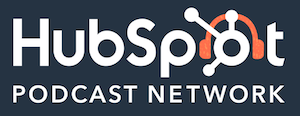
HubSpot Podcast Network is the audio destination for business professionals who seek the best education and inspiration on how to grow a business.
![]()
Everybody’s online, but are they finding your website? Grab the online spotlight and your customers’ attention with Semrush. From Content and SEO to ads and social media, Semrush is your one-stop-shop for online marketing. Build, manage, and measure campaigns —across all channels — faster and easier. Are you ready to take your business to the next level? Get seen. Get Semrush. Visit semrush.com/go to try it free for 7 days.




 In this episode of the Duct Tape Marketing Podcast, I interview Jamie Jay. Jamie
In this episode of the Duct Tape Marketing Podcast, I interview Jamie Jay. Jamie 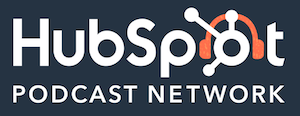
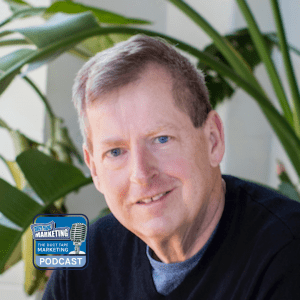
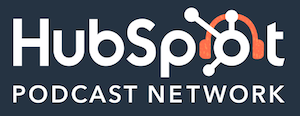
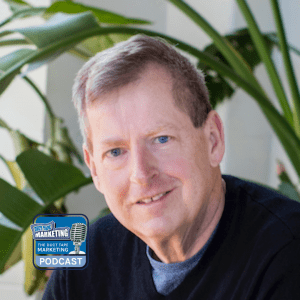 In this episode of the Duct Tape Marketing
In this episode of the Duct Tape Marketing 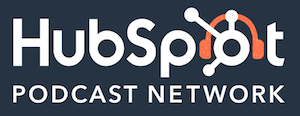
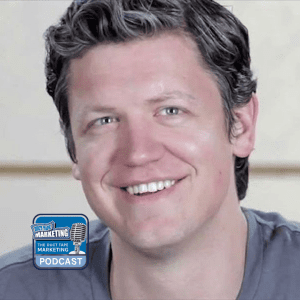 In this episode of the Duct Tape Marketing Podcast, I interview Brent Weaver. Brent is on a mission to help 10,000 digital agency owners achieve freedom in business and life by helping them own their market. Brent is the founder and CEO of uGurus, a business training, and education company dedicated to this mission. He also hosts one of the leading podcasts in the business niche—The Digital Agency Show and is the author of Get Rich in the Deep End: Commit to Your Niche, Own Your Market, and Audaciously Scale Your Agency.
In this episode of the Duct Tape Marketing Podcast, I interview Brent Weaver. Brent is on a mission to help 10,000 digital agency owners achieve freedom in business and life by helping them own their market. Brent is the founder and CEO of uGurus, a business training, and education company dedicated to this mission. He also hosts one of the leading podcasts in the business niche—The Digital Agency Show and is the author of Get Rich in the Deep End: Commit to Your Niche, Own Your Market, and Audaciously Scale Your Agency.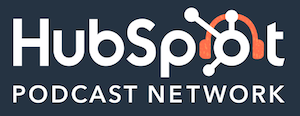
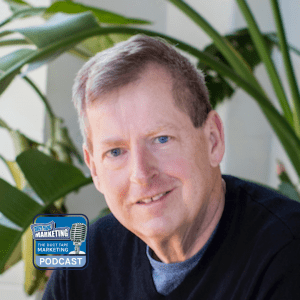 In this episode of the Duct Tape Marketing Podcast, I’m doing a solo show, and I’m gonna talk about the topic of analytics — specifically tracking results, either for your own business or for clients that you may work with.
In this episode of the Duct Tape Marketing Podcast, I’m doing a solo show, and I’m gonna talk about the topic of analytics — specifically tracking results, either for your own business or for clients that you may work with.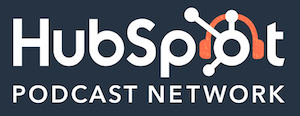

 .
.

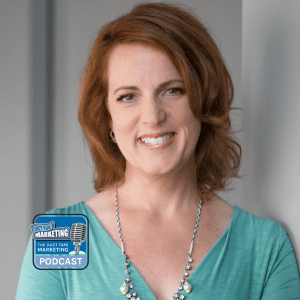 In this episode of the Duct Tape Marketing Podcast, I interview Whitney Johnson. Whitney
In this episode of the Duct Tape Marketing Podcast, I interview Whitney Johnson. Whitney 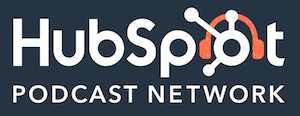
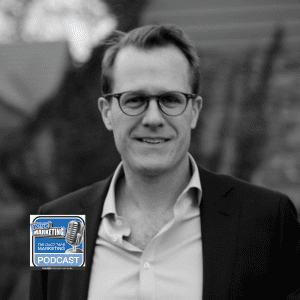 In this episode of the Duct Tape Marketing Podcast, I interview Matt Dixon. Matt is a Founding Partner of DCM Insights, the customer understanding lab. He’s also a frequent contributor to Harvard
In this episode of the Duct Tape Marketing Podcast, I interview Matt Dixon. Matt is a Founding Partner of DCM Insights, the customer understanding lab. He’s also a frequent contributor to Harvard 